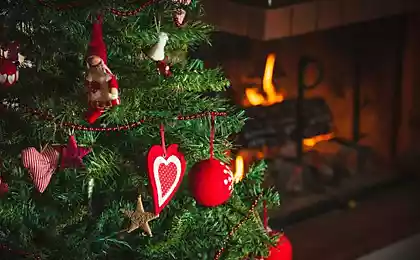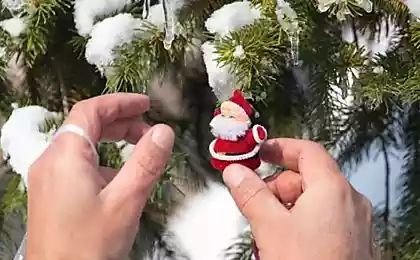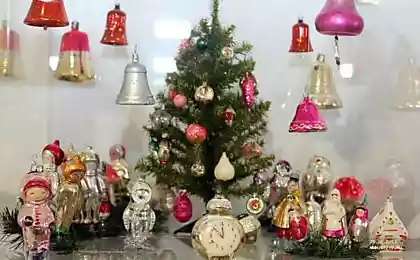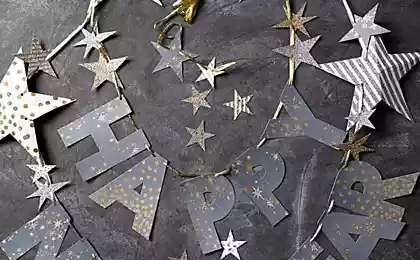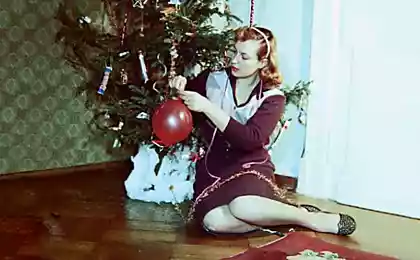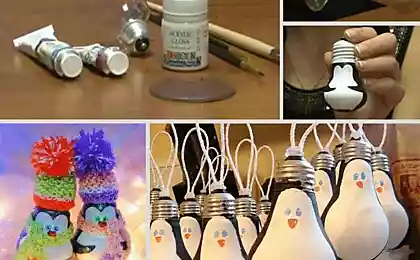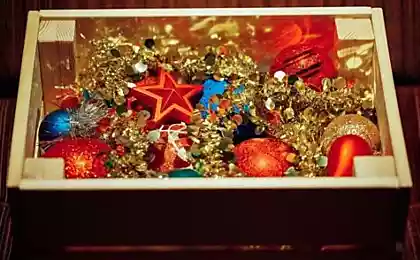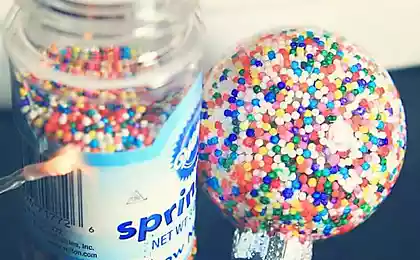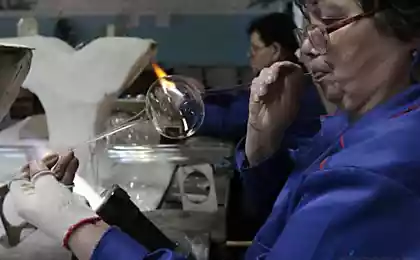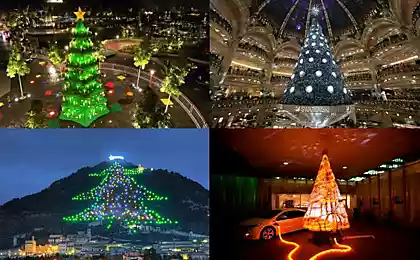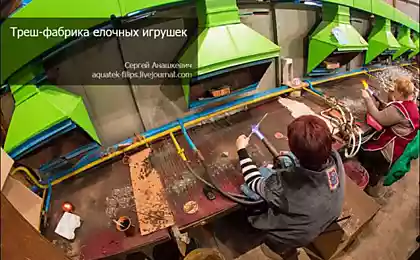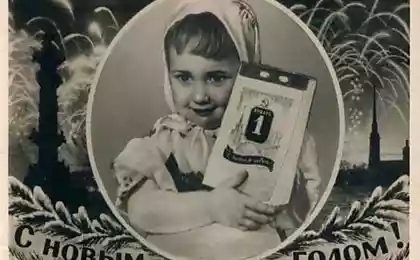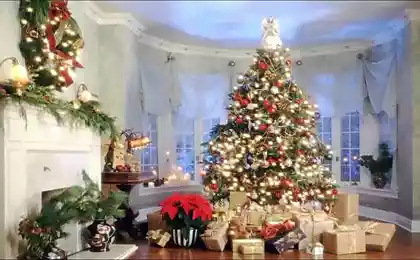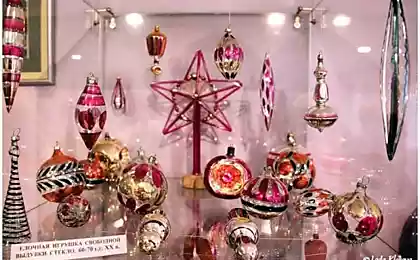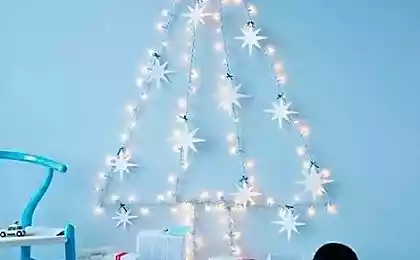612
Than decorated Christmas trees 20 years ago
Christmas tree is not only mandatory attribute of the holiday, but also a mirror reflecting the worldview of the era. Toys vary depending on the rulers, ideologies and attitudes of the people. Historian Alla Salnikova talks about what happened with the Christmas decorations after the collapse of the Soviet Union.
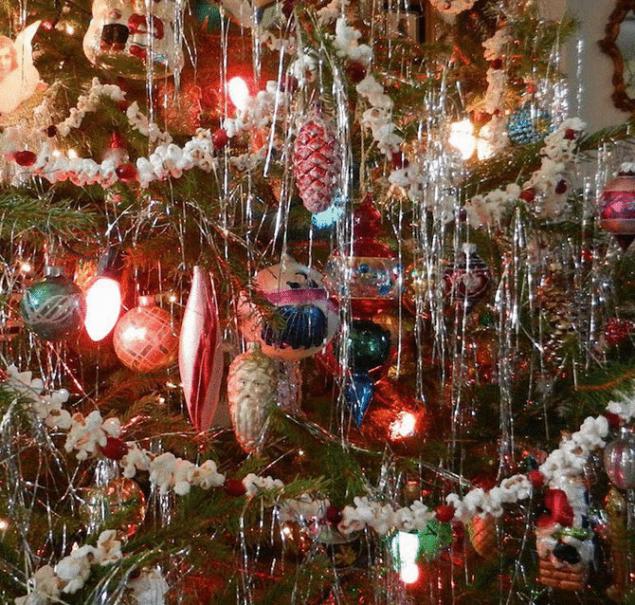
Irrescindable Soviet Soviet Christmas tree toys, then seemed an obvious anachronism, were quickly supplanted by imported Christmas decorations, most of which were Chinese products flooded the Russian market. It seemed that the Soviet fur-tree toys, and other "Soviet" things, came to an end and she will be sought after only by collectors.

Toys 1930 godofpower interest in such a toy is largely due to the fact that in the sphere of consumption she was the same typical stages, which characterized regimes and attitudes of people to things in the USSR, and then in post-Soviet Russia. Original and, by the way, for a long time — since its emergence in the second half of the 1930-ies and for more than a quarter century — Christmas toy was a scarce and therefore valuable and carefully stored. To toys treated with care: in families accumulated the entire collection of Christmas tree decorations, handed down to succeeding generations.
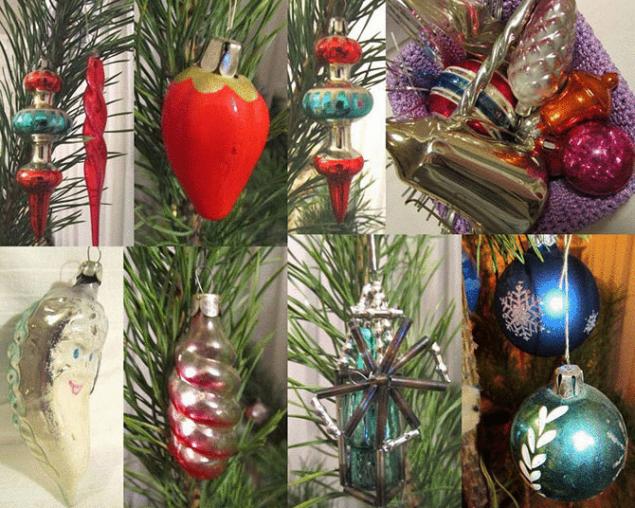
Christmas decorations from different periods, Strperiod to mechanical, industrial production of Christmas toys in the middle of 1960-ies has led to the emergence of a plurality of standardized products. Such a toy is not a pity to break or break and easy to replace. In Soviet society there was mass consumption patterns of Christmas decorations which somehow satisfied the Soviet economy. Let this economy was austere and virtually isolated from the rest of the world, let these toys were often poor and even miserable, but they had one great advantage — they are cheap, and they could afford one.
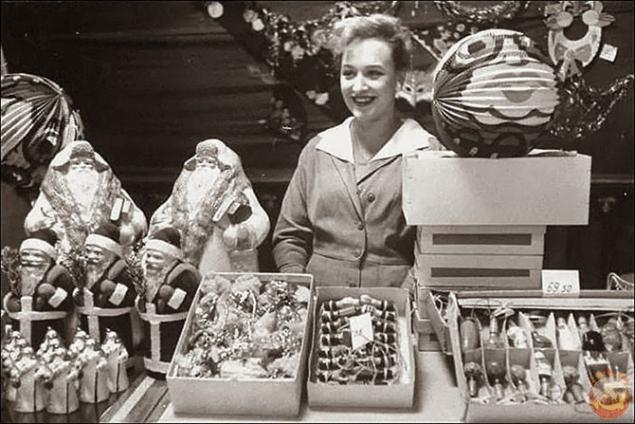
Holiday sale in the "Children's world"By the mid-1980s, the years consumer expectations of Soviet citizens has changed significantly. Largely they were focused on imported goods, which could not compete sturdy and environmentally friendly, but not very elegant and not always beautiful domestic samples. Products global Christmas tree market was now well-known not only due to penetrate into the USSR of Western glossy magazines and the subjects of foreign newsreel.
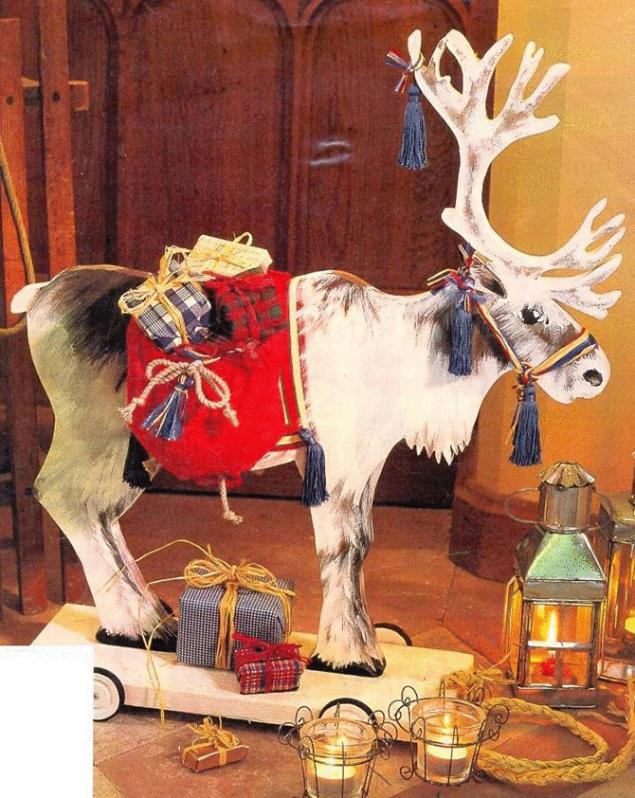
Christmas deer from the magazine Burda Moden 1994"On the occasion of the" branded toys were sold in the Soviet stores (after standing a long queue or "pull"), to purchase at a flea market or imported from abroad. Especially familiar with imported Christmas decorations were the upper strata of Soviet society. Putting a Christmas tree decorated with foreign toys, was considered particularly prestigious.

Christmas ornaments from the shelves Britaniya same until the beginning of 1990-ies were still only toys domestic production. In conditions of scarce economy their selection is more narrowed, and the quality has deteriorated: I still remember bought in December 1991, the glass lump is huge, the size of a palm, clumsily and crudely painted, very heavy, so not every fir branch to endure.

A variety of Christmas saryu 1990-ies with the opening of trade borders of the Russian market was flooded with massive imports, mainly Chinese Christmas products — beautiful, cheap, practical (the change of breaking glass came synthetics and plastic), sometimes not safe, but diverse. <...> A marvelous, but a rare exception among the Chinese of plenty looked like Christmas decorations, hand-made by Russian craftsmen-glassblowers — glass balls and spikes multicolor carpal laskovoi the painting with decorative trim a variety of materials; hand-painted wooden decorations, etc. However, the production of Christmas tree decorations at a difficult time for the country has steadily decreased. According to well-known collector of Soviet Christmas decorations, American Kim Balashak, the first 15 post-Soviet years could go down in history Russian Christmas decorations as the time of the domination of faceless monotone balls and icicles, decorated in a simple Western aesthetics and manufactured by industrious Chinese.

Tree in monochrome style of the European"Invasion" of imported toys was accompanied by a change in the General style of Christmas decoration, which is, in essence, this toy and determined. In Christmas fashion there was a sharp jump from a cozy, home, largely "child" trees for the pretentious designer Christmas tree for adults, where bright the diversity and variety of colors was not enough room. Unconditional leadership was captured by the tree, dressed in "European", monochrome style. She was decorated with "tone on tone" with the obligatory presence of the "classic" silver or gold colour, and "classic" Christmas decorations — balls, bows, sparkling garlands. In this tree was dominated by restraint and brevity, which nevertheless creates a sense of stylish luxury. Also became popular the style of "minimalism" when the tree hung a few bright balls. The fashion for Christmas trees with colorful artificial pine needles — blue, silver, yellow, red, orange and even black — also demanded a change of style in their decoration.
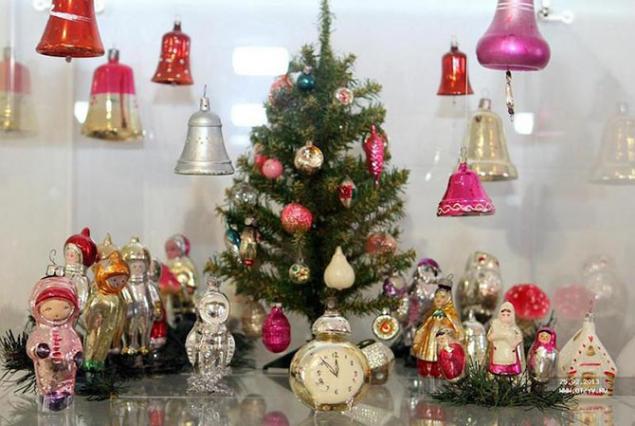
"It is obvious that the old Soviet Christmas toy did not fit into this new Christmas style not only in its content but in its form".
Over time, however, minimalism and stylistic monochrome Christmas tree, encountered at every step, especially when decorating public trees, open space, restaurants, hotels, offices and hypermarkets became a bit annoying. Much more unusual was the look of a Christmas tree decorated in retro style, be it Victorian garlands of silk bows or Soviet Christmas tree decorations 1950's. And if most recently this tree was mostly the domain of aesthetes or older, wishing to please the fancy ornaments of their grandchildren and great-grandchildren, is gradually making trees increasingly began to enter the holiday home.
Source: www.fresher.ru/2014/12/19/chem-ukrashali-elki-20-let-nazad/#more-100325

Irrescindable Soviet Soviet Christmas tree toys, then seemed an obvious anachronism, were quickly supplanted by imported Christmas decorations, most of which were Chinese products flooded the Russian market. It seemed that the Soviet fur-tree toys, and other "Soviet" things, came to an end and she will be sought after only by collectors.

Toys 1930 godofpower interest in such a toy is largely due to the fact that in the sphere of consumption she was the same typical stages, which characterized regimes and attitudes of people to things in the USSR, and then in post-Soviet Russia. Original and, by the way, for a long time — since its emergence in the second half of the 1930-ies and for more than a quarter century — Christmas toy was a scarce and therefore valuable and carefully stored. To toys treated with care: in families accumulated the entire collection of Christmas tree decorations, handed down to succeeding generations.

Christmas decorations from different periods, Strperiod to mechanical, industrial production of Christmas toys in the middle of 1960-ies has led to the emergence of a plurality of standardized products. Such a toy is not a pity to break or break and easy to replace. In Soviet society there was mass consumption patterns of Christmas decorations which somehow satisfied the Soviet economy. Let this economy was austere and virtually isolated from the rest of the world, let these toys were often poor and even miserable, but they had one great advantage — they are cheap, and they could afford one.

Holiday sale in the "Children's world"By the mid-1980s, the years consumer expectations of Soviet citizens has changed significantly. Largely they were focused on imported goods, which could not compete sturdy and environmentally friendly, but not very elegant and not always beautiful domestic samples. Products global Christmas tree market was now well-known not only due to penetrate into the USSR of Western glossy magazines and the subjects of foreign newsreel.

Christmas deer from the magazine Burda Moden 1994"On the occasion of the" branded toys were sold in the Soviet stores (after standing a long queue or "pull"), to purchase at a flea market or imported from abroad. Especially familiar with imported Christmas decorations were the upper strata of Soviet society. Putting a Christmas tree decorated with foreign toys, was considered particularly prestigious.

Christmas ornaments from the shelves Britaniya same until the beginning of 1990-ies were still only toys domestic production. In conditions of scarce economy their selection is more narrowed, and the quality has deteriorated: I still remember bought in December 1991, the glass lump is huge, the size of a palm, clumsily and crudely painted, very heavy, so not every fir branch to endure.

A variety of Christmas saryu 1990-ies with the opening of trade borders of the Russian market was flooded with massive imports, mainly Chinese Christmas products — beautiful, cheap, practical (the change of breaking glass came synthetics and plastic), sometimes not safe, but diverse. <...> A marvelous, but a rare exception among the Chinese of plenty looked like Christmas decorations, hand-made by Russian craftsmen-glassblowers — glass balls and spikes multicolor carpal laskovoi the painting with decorative trim a variety of materials; hand-painted wooden decorations, etc. However, the production of Christmas tree decorations at a difficult time for the country has steadily decreased. According to well-known collector of Soviet Christmas decorations, American Kim Balashak, the first 15 post-Soviet years could go down in history Russian Christmas decorations as the time of the domination of faceless monotone balls and icicles, decorated in a simple Western aesthetics and manufactured by industrious Chinese.

Tree in monochrome style of the European"Invasion" of imported toys was accompanied by a change in the General style of Christmas decoration, which is, in essence, this toy and determined. In Christmas fashion there was a sharp jump from a cozy, home, largely "child" trees for the pretentious designer Christmas tree for adults, where bright the diversity and variety of colors was not enough room. Unconditional leadership was captured by the tree, dressed in "European", monochrome style. She was decorated with "tone on tone" with the obligatory presence of the "classic" silver or gold colour, and "classic" Christmas decorations — balls, bows, sparkling garlands. In this tree was dominated by restraint and brevity, which nevertheless creates a sense of stylish luxury. Also became popular the style of "minimalism" when the tree hung a few bright balls. The fashion for Christmas trees with colorful artificial pine needles — blue, silver, yellow, red, orange and even black — also demanded a change of style in their decoration.

"It is obvious that the old Soviet Christmas toy did not fit into this new Christmas style not only in its content but in its form".
Over time, however, minimalism and stylistic monochrome Christmas tree, encountered at every step, especially when decorating public trees, open space, restaurants, hotels, offices and hypermarkets became a bit annoying. Much more unusual was the look of a Christmas tree decorated in retro style, be it Victorian garlands of silk bows or Soviet Christmas tree decorations 1950's. And if most recently this tree was mostly the domain of aesthetes or older, wishing to please the fancy ornaments of their grandchildren and great-grandchildren, is gradually making trees increasingly began to enter the holiday home.
Source: www.fresher.ru/2014/12/19/chem-ukrashali-elki-20-let-nazad/#more-100325
A unique ancient remedy for coughs, sore throats and colds
Getting rid of the stones and treatment of gallbladder.
